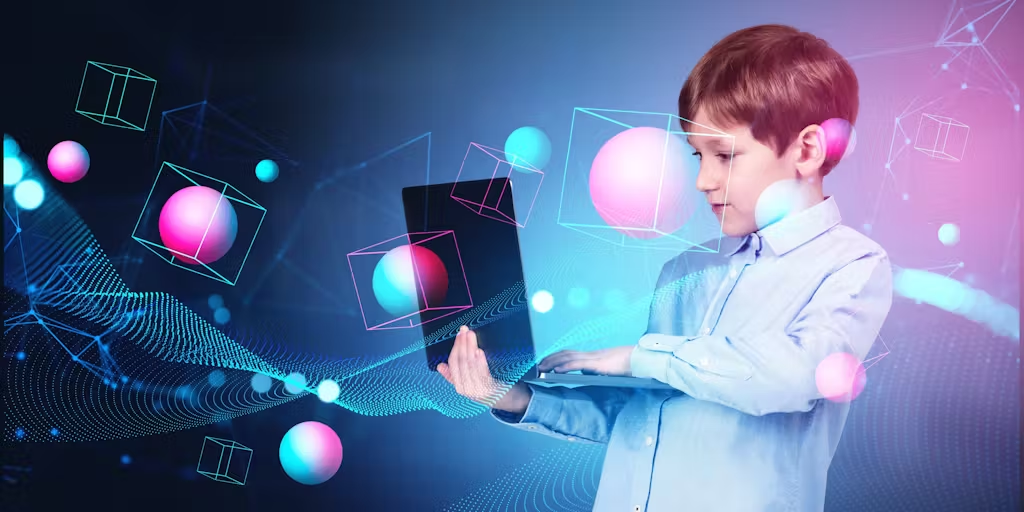
The Role of Technology
Imagine a classroom where every student learns at their own pace, exploring subjects that ignite their curiosity while receiving support tailored just for them. This isn’t the future; it’s personalized learning in action, and technology plays a pivotal role in making it happen. As traditional teaching methods evolve, we find ourselves at an exciting crossroads where innovation meets education. By harnessing the power of technology, educators can create dynamic environments that cater to individual needs and preferences. Let’s dive into how this transformation is reshaping the landscape of learning as we know it.

Definition of Personalized Learning
Personalized learning is an educational approach designed to meet the unique needs of each student. It moves away from the one-size-fits-all model, allowing learners to progress at their own pace.
This method focuses on individual strengths, weaknesses, and interests. By doing so, it empowers students to take ownership of their education. Learners can explore topics that resonate with them while receiving tailored instruction.
At its core, personalized learning emphasizes flexibility in both content and delivery methods. This creates a more engaging experience for students. It fosters deeper understanding as they delve into subjects that ignite their passion.
Incorporating various strategies—like adaptive assessments and customized lesson plans—personalized learning ensures no two journeys are alike. Each student’s path becomes uniquely theirs, encouraging exploration and growth in ways traditional approaches often overlook.
Advantages of Personalized Learning with Technology
Personalized learning with technology opens doors to innovative educational experiences. It tailors lessons based on individual student needs, allowing for a more engaging journey through knowledge.
Students can learn at their own pace. This flexibility helps them grasp complex concepts without the pressure of keeping up with peers.
Real-time feedback is another game-changer. With tools like adaptive assessments, learners receive immediate insights into their performance, enabling timely adjustments in their study strategies.
Moreover, technology connects students to a wealth of resources beyond traditional textbooks. Interactive simulations and multimedia content make learning dynamic and enjoyable.
Collaboration also flourishes in tech-driven environments. Digital platforms encourage teamwork among students from different backgrounds, enriching discussions and perspectives.
Personalized learning fosters independence and cultivates critical thinking skills that are essential for lifelong success in an ever-evolving world.
Different Forms of Technology in Personalized Learning
Personalized learning leverages various technological tools to enhance the educational experience. One prominent form is adaptive learning software. This technology adjusts content and assessments based on individual student performance, ensuring a tailored approach.
Learning management systems (LMS) also play a significant role. They allow educators to create customized courses that cater to diverse learning styles, making it easier for students to engage with materials at their own pace.
Mobile apps have emerged as powerful resources in personalized education. With interactive features, they enable learners to practice skills anytime and anywhere, promoting continuous growth outside traditional classrooms.
Additionally, virtual reality (VR) offers immersive experiences that can be tailored to specific subjects or skill levels. Students can explore environments or scenarios that enrich understanding in ways textbooks can’t achieve.
Data analytics provides insights into student progress and preferences, allowing for further customization of learning paths based on real-time feedback.
Challenges and Limitations of Technology in Personalized Learning
While technology has revolutionized personalized learning, it isn’t without its flaws. One major challenge is access. Not every student has reliable internet or devices at home, creating a digital divide that can hinder progress.
Moreover, data privacy concerns loom large. Parents and educators worry about how student information is collected and used by tech companies. This can lead to hesitance in fully embracing these tools.
There’s also the risk of over-reliance on technology. If not balanced with traditional methods, students may miss out on essential interpersonal skills developed through face-to-face interactions.
Training for educators is crucial yet often overlooked. Many teachers feel unprepared to implement new technologies effectively in their classrooms, limiting the potential benefits of personalized learning experiences.

Success Stories and Examples of Technology-Driven Personalized Learning
One notable success story is the use of adaptive learning platforms in K-12 education. Schools utilizing programs like DreamBox and iReady have reported significant improvements in student engagement and achievement. These tools adjust to each learner’s pace, offering tailored exercises that challenge them just enough.
In higher education, institutions like Arizona State University have embraced personalized pathways through online courses. Students can choose modules that align with their interests while receiving real-time feedback on their progress.
Another example comes from the realm of special education. Technologies such as speech recognition software empower students with disabilities to engage more effectively with content tailored to their unique needs.
These innovative approaches illustrate how technology reshapes learning experiences, making them more relevant and effective for diverse learners across various settings. The impact is clear: personalized learning fosters a deeper connection between students and their educational journeys.
The Future of Technology in Personalized Learning
The future of technology in personalized learning is vibrant and full of possibilities. Emerging technologies like artificial intelligence and machine learning are set to revolutionize the educational landscape. These tools can analyze individual student performance, adapting content to meet unique needs.
Virtual reality (VR) also plays a significant role, immersing students in experiential learning environments. Imagine exploring historical events or scientific concepts firsthand through VR headsets. This method enhances engagement and retention.
Moreover, data analytics will become more sophisticated. By gathering insights on learner preferences and progress, educators can create customized pathways that promote deeper understanding.
Integration with mobile devices ensures that personalized learning extends beyond the classroom walls. Students can access tailored resources anytime, anywhere.
As we look ahead, collaboration between tech developers and educational institutions will be crucial. Together they can craft innovative solutions that empower learners while addressing diverse challenges in education.”
.jpg)
Conclusion
The integration of technology into personalized learning is transforming education. It offers tailored experiences that cater to the unique needs of every student. By leveraging various technological tools, educators can create dynamic and interactive environments that encourage engagement and foster deeper understanding.
As we continue to explore innovative approaches in this field, it becomes clear that the role of technology in personalized learning will only grow stronger. With more advancements on the horizon, the future holds immense potential for enhancing educational outcomes and ensuring students receive an experience designed just for them. Embracing these changes will be crucial as we work towards creating a more inclusive and effective educational landscape for all learners.



Leave a Reply